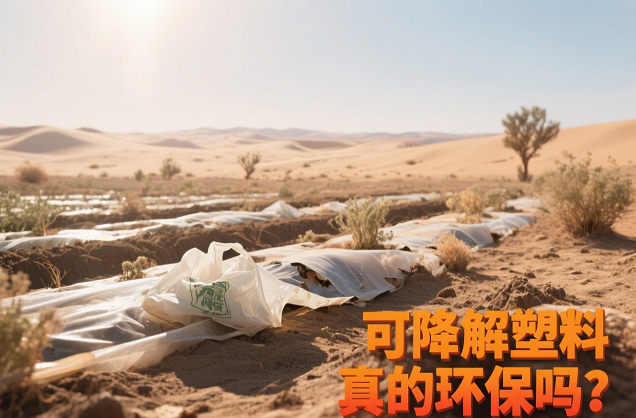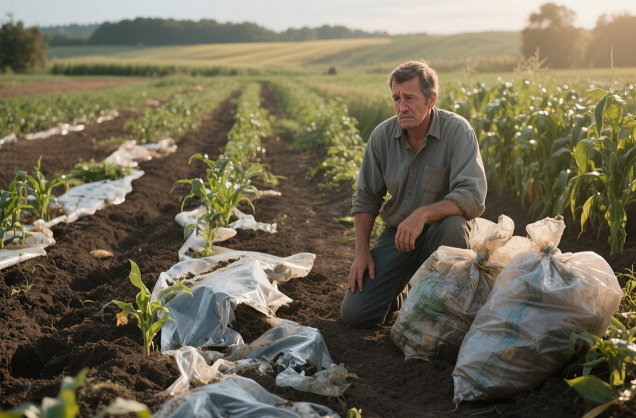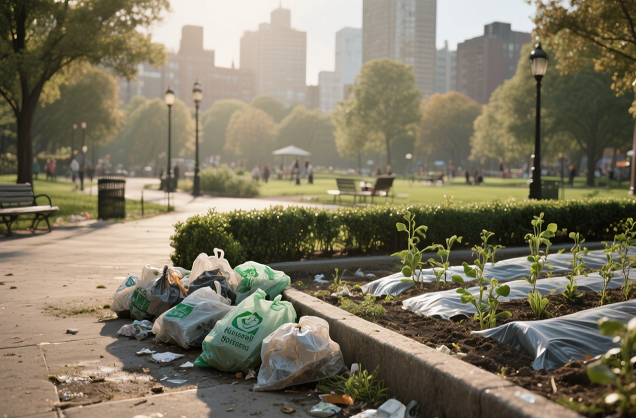Is Biodegradable Plastic Really Eco-Friendly? 10 Experimental Data Tells You the Truth
Is biodegradable plastic an environmental savior or a commercial gimmick?
In recent years, “biodegradable plastics” have been promoted as the perfect solution to white pollution. Supermarket shopping bags, takeaway packaging, and even disposable tableware have been labeled as “biodegradable” and “environmentally friendly”. But is this really the case?
In 2024, the international environmental organization Break Free From Plastic released a report stating that more than 60% of the world’s biodegradable plastic products can not be completely decomposed in the natural environment, and some of them are even more harmful than traditional plastics.

Part I: Laboratory Data Exposing the Truth about Degradable Plastics
1. Experiment 1: Comparison of Decomposition Rates in Natural Environments (latest study in 2024)
– Traditional PE plastic: 500 years without degradation (NOAA data)
– Degradable Plastic (PLA):
– Industrial composting environment (60°C): 90% decomposition in 6 months
– Natural soil (25°C): only 30% degradation in 2 years.
– Marine environment: almost no degradation (Nature journal 2023 study)
2. Experiment 2: Comparison of microplastic production
– Conventional plastics: broken into microplastics (particles under 5mm) under UV light
– Oxo-degradable plastics (with additives):
– Oxo-degradable plastics (with additives): broken into microplastics within 1 year (the EU has banned such plastics from being labeled “degradable”)
– Truly compostable plastics (e.g. PBAT+PLA): almost no microplastics under composting conditions
3. Experiment 3: Impact on soil ecology
– PLA plastic residues: inhibition of soil microbial activity (experiment 2023 at the University of Bonn, Germany)
– PBAT plastics: completely decomposed by microorganisms within 90 days in compost, no impact on soil health

Part 2: 5 Major Misconceptions about Biodegradable Plastics
Myth 1: “Biodegradable” = decompose when thrown into the soil
✅ The Truth:
Industrial composting (high temperature + microorganisms) vs. Home composting (low temperature) vs. Natural environment (extremely difficult to decompose)
Only products with “Home Compostable” certifications (e.g., OK Compost HOME) can be biodegradable at home
Myth 2: “Bio-based” = 100% environmentally friendly
✅ Truth:
Cornstarch plastics (PLA) still require industrial composting and decompose very slowly in the natural environment
Some bio-based plastics are mixed with non-biodegradable ingredients, so the actual environmental friendliness is questionable
Myth #3: Biodegradable plastics can be thrown away at any time
✅ Truth:
In a landfill (oxygen-poor environment), biodegradable plastics can emit methane (a potent greenhouse gas)
Into the oceans, the rate of degradation is virtually nil (Science Magazine 2024) Study)

Part III: How to recognize truly environmentally friendly plastics?
1. Recognize the international certification mark
Certification mark Meaning Applicable conditions
OK Compost INDUSTRIAL Degradable for industrial composting Professional facilities required
OK Compost HOME Degradable for home composting Compostable at home
BPI certified Complies with U.S. composting standards for industrial composting
TÜV Austria Compostable for the EU Rigorous testing
⚠️ NOTE: If a product is only labeled “degradable” but not certified, it may not comply with the standard! Note: If a product is labeled “biodegradable” but not certified, it probably does not meet the standard!
2. Check ingredient list
Recommended materials:
PBAT+PLA (fully compostable)
PHA (marine degradable, but costly)
Avoid:
Oxo-degradable plastics (with PE+additives) (banned in the EU)
Uncertified PLA (may not decompose naturally)
3. Practical test: home composting experiment
Method:
Cut up plastic samples, bury in composting bin
Maintain humidity at 60% and temperature at 20-30°C for 3 months to see if it decomposes. C
Observe decomposition after 3 months
True eco-plastic: will be visibly crumbled and thinned
Pseudo-degradable plastic: basically no change

Part IV: Future Trends – What’s the Real Solution?
1. Reusable > Biodegradable
– Research data:
◦ A canvas shopping bag has a lower carbon footprint than a disposable “biodegradable” bag after 50 uses.
◦ Stainless steel cutlery is more environmentally friendly than biodegradable cutlery in the long term
2. Tightening policy regulation
– EU: False “biodegradable” labels will be banned from 2025.
– China: new national standard in 2024 requires biodegradable plastics to be labeled with decomposition conditions
3. How can consumers act?
✅ The right thing to do:
– Prioritize reusable products
– Purchase certified compostable plastics.
– Participate in waste segregation to ensure biodegradable plastics enter the composting system
❌ Wrong approach:
– Trusting the “biodegradable” label.
– Throwing away biodegradable plastics
If you have any questions you want to know, please feel free to come and consult, and we will be eager to answer them for you.
Contact us now
Fill out the form below
We will contact you immediately.

Summarize your business so the visitor can learn about your offerings from any page on your website.
About
Contact
- Add: Room 4006, No.1 Helong Yiheng Road, Baiyun District, Guangzhou City
- Tel: +8613450255948
- Wechat : +86-13450255948
- Fax: +86-13450255948
- E-mail: 13450255948@163.com
